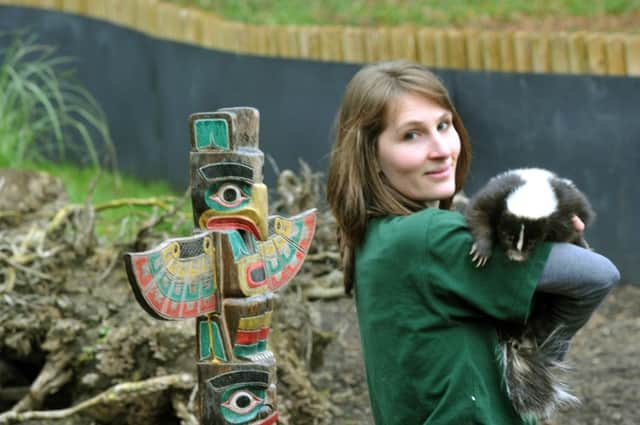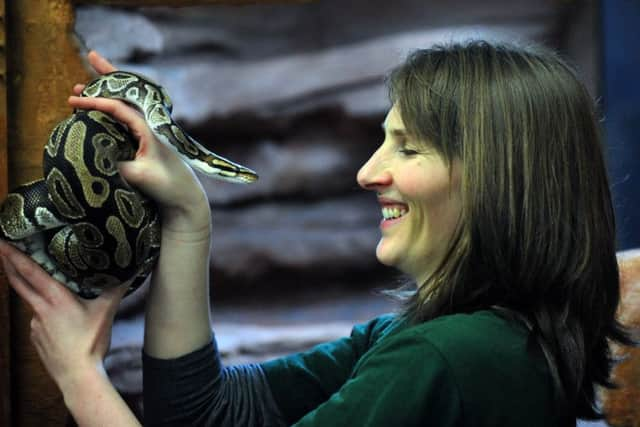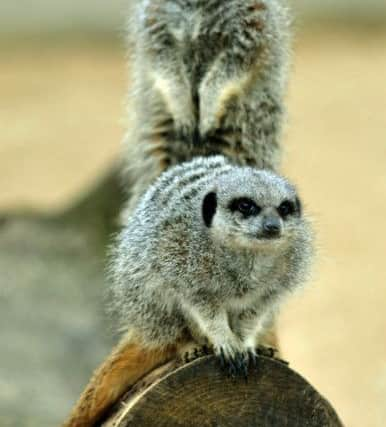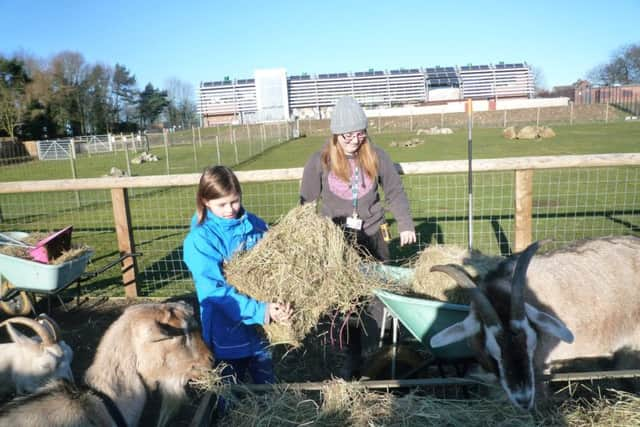New Yorkshire wildlife park inspires the next generation


It’s Saturday morning and my daughter has a tiny marsupial on her leg. The sugar glider, a sweet-toothed native of Australia, about 25 cm long, has jumped on her during a feeding session at York’s new Askham Bryan Wildlife and Conservation Park.
Tilly, ten, is a zookeeper for the day, a birthday gift for a youngster who adores animals but only has a pet hamster.
Advertisement
Hide AdAdvertisement
Hide AdCaroline Howard is the park’s 29-year-old manager, an English Literature graduate who grew up in the Lake District. Caroline’s parents are both ecologists and she had her first zoo job aged 16, becoming assistant manager after university.


Caroline, whose favourite creature is the medicinal leech - has been at the 17-acre park for a year.
She was in charge when it became a zoo in June and a member of the British Zoos and Aquariums in August and hopes it will soon become a European zoo member.
“Conservation is more effective on a big scale,” she says.“One reason I’m in zoos is because they encourage people to love animals and become interested in protecting them. People aren’t persuaded by statistics and the wild can only sustain so much. Zoos help with interaction in a more managed way.”
Advertisement
Hide AdAdvertisement
Hide AdThe aim of the park, which opened to the public last month in the grounds of Askham Bryan College, is to inspire and educate future generations - visitors and students - to respect and conserve animals and plants.


More than £6.8 million has been spent on the new centre in the last four years creating a host of habitats for the York college’s unusual and exotic guests - from a Yorkshire river to arid deserts, to a mangrove swamp, and a coral reef. Over the last few months wildlife as diverse as Spectacled Caiman, Hairy Armadillos, Californian King Snakes, Brown Trout and Iguanas have been introduced to their new Yorkshire homes.
The Centre has been designed by David Lazenby of Azureus Design Ltd who has created innovative and imaginative animal exhibits for wildlife centres and museums across Europe and the USA, and also at the “Eden Project” in Cornwall and involvement with “The Deep” in Hull.
Students study for diplomas through to honours degrees in Animal Science, Animal Management and Veterinary Nursing.
Advertisement
Hide AdAdvertisement
Hide AdMany go on to work as animal keepers, education officers in zoos and provide valuable field-based research into the conservation of endangered species and their habitats.


The college, with several campuses in the North and dozens of species, also gives students the chance to get involved in conservation.
In York there are projects protecting the tansy beetle on the banks of the Ouse and fundraising for habitat protection in Tanzania.
Caroline and her team are passionate about encouraging everyone, including children, to look after the planet.
Advertisement
Hide AdAdvertisement
Hide AdAs Tilly and I crouch down in a darkened room to feed mealworms and fruit to two snuffling armadillos, she says: “If we don’t inspire children and get them to care about protecting nature, that will cost us all dearly.


“Engaging a child with nature can have an impact on their whole life; maybe we’ll be able to inspire the David Attenborough of tomorrow. I want to protect biodiversity, the whole world of nature, not just one or two popular bits.”
Marcus Bodle, from York, studies animal management at the college and works as a keeper at weekends.
“I want to work in a zoo. This gets my foot in the door,” says the 21-year-old. He shows Tilly how to spray the moss in a bullfrog’s tank then lets her hold a bearded dragon. She’s captivated, immediately asking if she can have one. Then they feed live fruit flies to some beautiful blue poison arrow frogs.
Advertisement
Hide AdAdvertisement
Hide Ad“I’m positive about the way conservation is heading,” adds Marcus, who used to collect spiders, catching flies for them.
“Recent interest in the BBC’s Planet Earth programmes shows people are fascinated.”
The park is also developing a “Wildlife Superheroes” project to award schools protecting nature.


Student rangers – park volunteers who build climbing frames for animals one minute then help with birthday parties and social media the next – will be involved.
Advertisement
Hide AdAdvertisement
Hide Ad“We also do school workshops so kids can learn about everything from food chains to conservation,” says Caroline who certainly hopes her 16-month-old daughter will grow up in a world brimming with the wonders of nature.
“I want her to see aye-ayes (endangered mammals on Madagascar), binturongs (bearcats in Southeast Asia), Lord Howe Island stick insects (the length of a human hand and perhaps the world’s rarest insect) and partula snails (many species are extinct),” she says.
“But I also want her to live in a world with benefits from nature like food, clean air and compounds that turn out to have medical value.
“How terrible if the rosy periwinkle had gone extinct before anyone discovered its use in treating cancer.”
The Centre features:
Advertisement
Hide AdAdvertisement
Hide Ada dynamic Yorkshire Dales river system with local fish species such as brown trout and grayling
a coastal rock pool with native species such as starfish and common prawn
a Lake Malawi tank with rare and more common species of Cichlid
a tropical coral reef system with Yellow Tang Fish, Raccoon Butterfly Fish and Clown Fish
Advertisement
Hide AdAdvertisement
Hide Ada display of amphibians with rare newts from Lake Urmia in Iran, Amazon Milk Frogs and coloured Poison Dart Frogs
tropical environments featuring large reptiles such as Spectacled Caiman and Green Iguana, plus the Tokay Gecho and Goliath Bird Eating Tarantula Spider
an arid desert area with Californian King Snake, Graphic Spiny Lizard and Desert Iguana
mangrove swamp with Mudskippers and Fiddler Crabs
a nocturnal cave system with Egyptian Jerboa, Palm Civet, Hairy Armadillos, Sugar Gliders, Gambian Pouched Rat, Blind Cave Fish and Tailless Whip Scorpions
The Askham Bryan Wildlife and Conservation Park is open to the public at Weekends, bank holidays and school holidays. For more information, visit abcwildlifepark.co.uk.